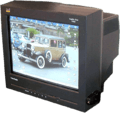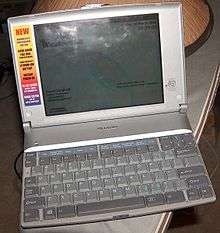Mixed reality
Mixed reality (MR), sometimes referred to as hybrid reality,[1] is the merging of real and virtual worlds to produce new environments and visualizations where physical and digital objects co-exist and interact in real time. Mixed reality takes place not only in the physical world or the virtual world,[1] but is a mix of reality and virtual reality, encompassing both augmented reality and augmented virtuality[2] via immersive technology. The first immersive mixed reality system, providing enveloping sight, sound, and touch was the Virtual Fixtures platform developed at the U.S. Air Force's Armstrong Laboratories in the early 1990s. In a study published in 1992, the Virtual Fixtures project at the U.S. Air Force demonstrated for the first time that human performance could be significantly amplified by the introduction of spatially registered virtual objects overlaid on top of a person's direct view of a real physical environment.[3]
Virtual Reality (VR) versus Augmented Reality (AR) versus Mixed Reality (MR)
The definitions in the modern contemporary economy makes the distinction between VR, AR and MR very clear:
- Virtual reality (VR) immerses users in a fully artificial digital environment.
- Augmented reality (AR) overlays virtual objects on the real-world environment.
- Mixed reality (MR) not just overlays but anchors virtual objects to the real world and allows the user to interact with the virtual objects.
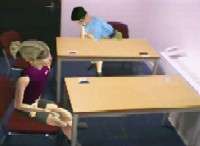
Definition
Virtuality continuum and mediality continuum
In 1994 Paul Milgram and Fumio Kishino defined a mixed reality as "...anywhere between the extrema of the virtuality continuum" (VC),[2] where the virtuality continuum extends from the completely real through to the completely virtual environment with augmented reality and augmented virtuality ranging between. The first fully immersive mixed reality system was the Virtual Fixtures platform developed at US Air Force, Armstrong Labs in 1992 by Louis Rosenberg to enable human users to control robots in real-world environments that included real physical objects and 3D virtual overlays called "fixtures" that were added enhance human performance of manipulation tasks. Published studies showed that by introducing virtual objects into the real world, significant performance increases could be achieved by human operators.[6][7]
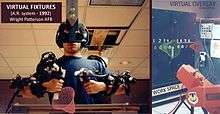
The continuum of mixed reality is one of the two axes in Steve Mann's concept of mediated reality as implemented by various welding helmets and wearable computers and wearable photographic systems he created in the 1970s and early 1980s,[8][9][10][11][12] the second axis being the mediality continuum, which includes, for example, Diminished Reality (as implemented in a welding helmet or eyeglasses that can block out advertising or replace real-world ads with useful information)[13][14]
"The conventionally held view of a Virtual Reality (VR) environment is one in which the participant-observer is totally immersed in, and able to interact with, a completely synthetic world. Such a world may mimic the properties of some real-world environments, either existing or fictional; however, it can also exceed the bounds of physical reality by creating a world in which the physical laws ordinarily governing space, time, mechanics, material properties, etc. no longer hold. What may be overlooked in this view, however, is that the VR label is also frequently used in association with a variety of other environments, to which total immersion and complete synthesis do not necessarily pertain, but which fall somewhere along a virtuality continuum. In this paper we focus on a particular subclass of VR related technologies that involve the merging of real and virtual worlds, which we refer to generically as Mixed Reality (MR)."

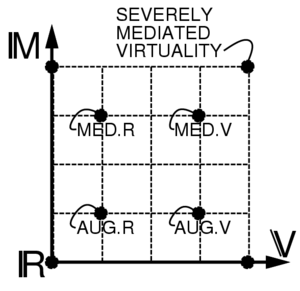
Interreality physics
In a physics context, the term "interreality system"[15] refers to a virtual reality system coupled to its real-world counterpart. A paper in the May 2007 issue of Physical Review E[16] describes an interreality system comprising a real physical pendulum coupled to a pendulum that only exists in virtual reality. This system apparently has two stable states of motion: a "Dual Reality" state in which the motion of the two pendula are uncorrelated and a "Mixed Reality" state in which the pendula exhibit stable phase-locked motion which is highly correlated. The use of the terms "mixed reality" and "interreality" in the context of physics is clearly defined but may be slightly different in other fields.
Augmented virtuality
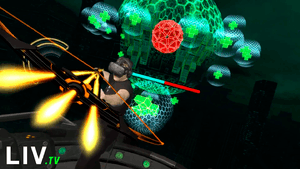
Augmented virtuality (AV), is a subcategory of mixed reality which refers to the merging of real world objects into virtual worlds.[18]
As an intermediate case in the virtuality continuum, it refers to predominantly virtual spaces, where physical elements, e.g. physical objects or people, are dynamically integrated into, and can interact with, the virtual world in real time. This integration is achieved with the use of various techniques. Often streaming video from physical spaces (e.g., via webcam)[19] or using 3-dimensional digitalisation of physical objects.[20]
The use of real-world sensor information (e.g., gyroscopes) to control a virtual environment is an additional form of augmented virtuality, in which external inputs provide context for the virtual view.
Characteristics of Mixed Reality
Mixed reality has five specific characteristics. The first is that mixed reality overlays the real world with digital content, this means that you can see digital holograms of varying objects around you. Second, it allows users of mixed reality hardware to step into another dimension - a world that is part real and part virtual. This means that it is possible for users to view and interact with holograms that are placed in the real world, and that mixed reality surrounds a user 365° degrees in 3D. Third, mixed reality allows users to do magic, since it makes it possible to see, move and shape objects that are not physically there (holograms). Fourth, mixed reality is accessible everywhere if you have access to the right tools (e.g. WiFi, and mixed reality hardware). During a session It is possible to anchor virtual holograms, so, you can walk around them, or you can choose to make them move with you in every direction (Microsoft, 2018). Fifth, up until now there are two leading providers of mixed reality – Microsoft and Realfiction. To experience or work with mixed reality, it requires a mixed reality headset (with optional motion controllers), Microsoft HoloLens, a Realfiction Dreamoc or a Realfiction DeepFrame.[21][22]
Virtual reality (positive) Probably the most positive and helpful element of the usage of virtual reality that it gives the company a bigger amount of audience, which whome they can communicate with, as they won't be just communicating with the people from their everyday life, but will as well interact with alll their potential customers throughout the entire internet. Another positive side of the usage of virtual reality is that it helps the employees to acquire the desired knowledge of performing a certain job, along with this it also considers a lower level of risk involved. This can be mostly recognized within industries of architecture, medicine, and a lot more. Last but certainly not the least is that virtual reality helps people with certain disabilities, such as sight to experience all the features of the world, which they might can't or have some difficulties to observe without the usage of virtual reality. ("Pros and Cons", 2018)
Virtual reality (negative) Most likely the biggest disadvantage of virtual reality is that the companies which are using it will not be able to target the entire audience, as there are customers who can't afford the usage of virtual reality, as well for those who don't have access towards it. Another negative consequence which virtual reality can have is that many of their customers can become addicted to the usage of virtual reality, and changing their habits towards the virtual worlds, and eventually forget about what their responsibilities are within their real lives. One of the negative sides of virtual reality, which scares certain customers the most is that the usage of VR headsets can have an influence and eventually harm their health situation, as there were situations where certain customers suffered from sickness and headaches. ("Pros and Cons", 2018)
Augmented reality (positive) As in today's world almost everyone has a smartphone, companies can take the advantage of incorporating augmented reality with the smartphone, as it is the easiest way to satisfy the customers desired needs and goals. Not only will it help the customers, but it will help as well the retailers of performing their tasks and duties. Augmented reality will also strongly impact the society in which a company is operating in, as the marketing and advertisement with the augmented reality will lead to a huge interaction with their customers, as their communication will increase. For example, the development of navigation systems, there were situations of car accidents, because drivers were obliged to take their eyes of the road and look at the screen. A positive side of augmented reality is that it will prevent this from happening, as it will help companies to develop windshields with a navigation device within them. Probably the most important positive side of augmented reality nowadays is recognized in the fields of medicine, as with the right technology doctors have the ability of performing their surgeries a lot easier, than without the same technology. For instance the usage of Google glasses helped the doctors to see certain things within the body, which they were unable to by the naked eye. ("Impact of Augmented Reality", 2018)
Augmented reality (negative) The easiest way to recognize how augmented reality has a negative impact is through the usage of Google glass, as a woman was wearing them in San Francisco, where others didn't appreciate her wearing them, this leads to ruining and harming the privacy of individuals, as they can't have their desired needs and wants, because of the influence of others. Another important negative aspect of using augmented reality is that it is assumed that in the future companies will have the ability to create certain doppelgangers of individuals, which will harm them as they could cause big identity issues, as for example the doppelganger might go and rob a bank, or harm other individuals as well. Augmented reality can also harm the self-confidence of individuals, as for example certain employees have had the ability of using augmented reality devices, some of them didn't. Those who had, have most likely performed better and finished their tasks at a much quicker time. This led to the change of certain individuals to check whether they are willing to continue doing their job without the usage of augmented reality, in other words to change their desired career and turn to a totally different field. ("We love augmented reality, but let’s fix things that could become big problems", 2018)
Mixed reality (positive) Probably in total the most positive aspect of the usage of mixed reality within the company's is the ability to target a huge audience from your office, as with the usage of internet and smartphones, which have become an essential part of every human being on a daily basis. Another advantage of mixed reality is that organizations can also have the opportunity of expanding their knowledge about certain industries with the usage of mixed reality. For example, with the usage of mix reality doctors and architecs can perform their jobs easier. Or on the other hand people working in car manufacturing, will have an easier job of making new navigation systems, which will lead to a reduced number of accidents. Maybe the least used version of mixed reality is in the medicine fields, as it helps blind people to have the ability to experience something that they wouldn't be able without the usage of mixed reality, as well of performing surgeries, which has become much easier for certain doctors to perform than without mixed reality.
Mixed reality (negative) The positive side of mixed reality is that they can engage with a larger number of audience, but what certain company's don't realize is that people living in poor countries aren't able to afford and pay for mixed reality products, as they cost a fortune. Along with this, even for those who are able to buy it, they might have problems with privacy, as certain people aren't happy and comfortable with other people when they are wearing for example google glasses. Which harms the privacy of individuals. Another disadvantage of mixed reality is that in the future people could be more and more used to the usage of mixed reality, which can lead an individual of totally forgetting their tasks and responsibilities in the real life. Along with this certain company's will try to make clones of certain individuals, which can lead to a horrible accident in terms of not harming only themselves, but others as well. The last disadvantage of using mixed reality within an organization is that people can have mental and physical issues with it as it harms the eyes as well the brain of individuals. Through this it can also lead individuals to test whether they are willing to perform their tasks and duties at their jobs, as people using mixed reality are performing their tasks and duties much quicker than those who are not.
Applications
A topic of much research, MR has found its way into a number of applications, evident in the arts and entertainment industries. However, MR is also branching out into the business, manufacturing and education worlds with systems such as these:
- IPCM – Interactive product content management
Moving from static product catalogs to interactive 3D smart digital replicas. Solution consists of application software products with scalable license model.
- SBL – Simulation based learning
Moving from e-learning to s-learning—state of the art in knowledge transfer for education. Simulation/VR based training, interactive experiential learning. Software and display solutions with scalable licensed curriculum development model.
- Military training
Combat reality is simulated and represented in complex layered data through HMD.
One of the possible applications mixed realities is for training military soldiers. Training solutions are often built on Commercial Off the Shelf (COTS) technologies. Examples of technologies used by the Army are Virtual Battlespace 3 and VirTra. As of 2018, the VirTra technology is being purchased by both the civilian and military law enforcement to train personnel in a variety of scenarios. These scenarios include active shooter; domestic violence; military traffic stops, etc.[23][24] Mixed reality technologies have been used by U.S. Army Research Laboratory scientists to study how this stress affects decision making. With mixed reality, researchers may safely study military service men and women in scenarios where soldiers would not likely survive.[25]
As of 2017, the U.S. Army was developing the Synthetic Training Environment (STE). STE is a collection of technologies for training purposes that has been estimated to include mixed reality. As of 2018, STE was still in development without a projected completion date. Some recorded goals of the simulation were to increase simulation training capabilities, and the availability of the environment to other systems, and to enhance realism.[26] It was claimed that training costs to be reduced with mixed reality environments like STE.[27][28] For example, using mixed environments could reduce the amount of munition expended during training.[29] It was reported in 2018 that STE would include representation of any part of the world's terrain for training purposes.[30] STE would offer a variety of training opportunities for squad brigade and combat teams, including, but not limited to Stryker, armory, and infantry.[31] It is estimated that STE will eventually replace the Army's Live, Virtual, Constructive – Integrated Architecture (LVC-IA).[32]
- Real Asset Virtualization Environment (RAVE)
3D Models of Manufacturing Assets (for example process manufacturing machinery) are incorporated into a virtual environment and then linked to real-time data associated with that asset. Avatars allow for multidisciplinary collaboration and decision making based on the data presented in the virtual environment. This example of Mixed Reality was pioneered and demonstrated by Kevyn Renner of Chevron Corporation for which a United States Patent 8,589,809, B2 "Methods and Systems for Conducting a Meeting in a Virtual Environment" was granted November 19, 2013.[33] One of the earliest patents describing mixed reality is shown by Michael DeLuca in United States Patent 6,064,354 "Stereoscopic user interface method and apparatus" granted May 16, 2000.[34]
- Remote working
Mixed reality allows a global workforce of remote teams to work together and tackle an organization's business challenges. No matter where they are physically located, an employee can strap on their headset and noise-canceling headphones and enter a collaborative, immersive virtual environment. Language barriers will become irrelevant as AR applications are able to accurately translate in real time. It also means a more flexible workforce. While many employers still use inflexible models of fixed working time and location, there is evidence that employees are more productive if they have greater autonomy over where, when and how they work. Some employees prefer loud work spaces, others need silence. Some work best in the morning, others at night. Employees also benefit from autonomy in how they work because everyone processes information differently. The classic VAK model for learning styles differentiates Visual, Auditory and Kinesthetic learners.[35]
Machine maintenance is also a subject that can be executed with the help of mixed reality. Larger companies that have multiple manufacturing locations with a lot of machinery can use mixed reality to educate and instruct their employee. The machines need regular checkups and have to be adjusted every now and then. These adjustments are mostly done by humans, so these employees need to be informed about every small adjustment that needs to be done. By using mixed reality, employees from multiple locations can put on a headset, and get live instructions about the changes. Instructors can operate the representation that every employee sees and can glide through the production area, zooming in to technical details and explain every change of a machine. It has shown that a five-minute training session with such a mixed reality program has the same results as the employees reading a 50-page training manual.[36]
- Healthcare
Surgical and ultrasound simulations are used as a training exercise for healthcare professionals. Medical mannequins are brought to life to generate unlimited training scenarios and teach empathy to healthcare professionals.[37]
- Aviation
Virtual models are used to allowed scientists and engineers to interact with a possible future creation before it touches the factory floor. These models provide the opportunity to gain an intuitive understanding of the exact product, including real size and constructions details that allow a closer inspection of interior parts. These virtual models are also used to find hidden problems and reduce time and money.[38]
- Functional mockup
Mixed reality is applied in the industrial field in order to build mockups that combine physical and digital elements.[39]
By making use of mixed reality organizations can make use of rapid prototyping or early trial and test methods, since designers are able to preview prototype designs at scale and reconstruct these previewed 3D models. This form of rapid prototyping will probably lead to an increase of quality in products, relatively lower R&D costs and improved efficiency.
- Architecture
Architecture firms can use mixed reality to project virtual representations of buildings they are working on over the real world with applications like SketchUp Viewer.[40] This means that the architecture firm itself as well as the client can prematurely view what the building will look like in the real world, and adjust accordingly. This is already done by some companies and is mainly done with the Microsoft HoloLens.[41]
There are already some applications that let consumers (re)design their own homes by making a 3D scan of the room. The consumers can then within that application relocate doors or windows and add all kinds of virtual furniture to the real-life room.[42]
Display technologies
Here are some more commonly used MR display technologies:
Examples
- Example projects from the Mixed Reality Lab at National University of Singapore / Keio University.
- Examples of Augmented Reality with vision-based positioning system.
- Ars Electronica
- ASTERION VR, Merged Reality for military and Law Enforcement training in Virtual CQB.
- EyeToy
- BAMZOOKi
- FightBox
- Magic Leap
- Microsoft Hololens
- WebGuyz Mixed Reality Education Platform
- Nokia Point & Find
- Interactive Multimedia Lab A research lab at the National University of Singapore focuses on Multi-modal Mixed Reality interfaces.
- Mixed Reality vs. Mixed Realities
- The Center for Research in Computing and the Arts and Calit2 at UCSD are home to a number of Mixed Reality projects, including Mixed Reality Performances by Micha Cárdenas and Elle Mehrmand
- The Dawn of Mixed Reality An introduction of Mixed Reality and compilation of example projects
- Mixed Reality Environments as Collaborative and Constructive Learning Spaces for Elementary School Children
- zSpace
See also
References
- 1 2 de Souza e Silva, Adriana; Sutko, Daniel M. (2009). Digital Cityscapes: merging digital and urban playspaces. New York: Peter Lang Publishing, Inc.
- 1 2 P. Milgram and A. F. Kishino (1994). "Taxonomy of Mixed Reality Visual Displays". IEICE Transactions on Information and Systems. pp. 1321–1329. Retrieved 2013-10-17.
- ↑ Rosenberg, Louis B. (1992). "The Use of Virtual Fixtures As Perceptual Overlays to Enhance Operator Performance in Remote Environments". Technical Report AL-TR-0089, USAF Armstrong Laboratory, Wright-Patterson AFB OH, 1992.
- ↑ Quora. "The Difference Between Virtual Reality, Augmented Reality And Mixed Reality". Forbes. Retrieved 2018-10-01.
- ↑ R. Freeman, A. Steed and B. Zhou, Rapid Scene Modelling, Registration and Specification for Mixed Reality Systems Archived 2007-02-06 at the Wayback Machine. Proceedings of ACM Virtual Reality Software and Technology, pp. 147-150, Monterey, California, November 2005.
- ↑ L. B. Rosenberg. The Use of Virtual Fixtures As Perceptual Overlays to Enhance Operator Performance in Remote Environments. Technical Report AL-TR-0089, USAF Armstrong Laboratory, Wright-Patterson AFB OH, 1992.
- ↑ Rosenberg, Louis B. (1993). "Virtual fixtures as tools to enhance operator performance in telepresence environments". Telemanipulator Technology and Space Telerobotics. 2057: 10–21. doi:10.1117/12.164901.
- ↑ Steve Mann, "Campus Canada", ISSN 0823-4531, p55 Feb-Mar 1985, pp58-59 Apr-May 1986, p72 Sep-Oct 1986
- ↑ Impulse, Volume 12, Number 2, 1985
- ↑ Quantigraphic camera promises HDR eyesight from Father of AR, by Chris Davies, SlashGear, Sep 12th 2012
- ↑ IEEE Technology & Society 31(3)
- ↑ Through the Glass, Lightly, IEEE Technology & Society, Volume 31, Number 3, Fall 2012, pages 10-14
- ↑ Mann, S., & Fung, J. (2001). Videoorbits on EyeTap devices for deliberately diminished reality or altering the visual perception of rigid planar patches of a real world scene. Proceedings of the Second IEEE International Symposium on Mixed Reality, pp 48-55, March 14–15, 2001.
- ↑ 关于智能眼镜 (About Smart Glasses), 36KR, 2016-01-09
- ↑ J. van Kokswijk, Hum@n, Telecoms & Internet as Interface to Interreality (Bergboek, The Netherlands, 2003).
- ↑ V. Gintautas and A. W. Hubler, Experimental evidence for mixed reality states in an interreality system Phys. Rev. E 75, 057201 (2007).
- ↑ LIV. "Mixed Reality Studio - The LIV Cube". LIV. Retrieved 2017-04-08.
- ↑ P. Milgram and A. F. Kishino, Taxonomy of Mixed Reality Visual Displays IEICE Transactions on Information and Systems, E77-D(12), pp. 1321–1329, 1994.
- ↑ The Distributed Interactive Virtual Environment (DIVE)
- ↑ "Introduction - Teleimmersion Lab". UC Berkeley.
- ↑ Realfiction. "Realfiction - Leaders in Mixed Reality & 3D Holographic Displays". www.realfiction.com. Retrieved 2018-10-01.
- ↑ "Mixed Reality at Microsoft". Mixed Reality at Microsoft. Retrieved 2018-10-01.
- ↑ Inc., VirTra,. "VirTra's Police Training Simulators Chosen by Three of the Largest U.S. Law Enforcement Departments". GlobeNewswire News Room. Retrieved 2018-08-22.
- ↑ "How do police use VR? Very well | Police Foundation". www.policefoundation.org. Retrieved 2018-08-22.
- ↑ Patton, Debbie; Marusich, Laura (2015-03-09). 2015 IEEE International Multi-Disciplinary Conference on Cognitive Methods in Situation Awareness and Decision. pp. 145–150. doi:10.1109/COGSIMA.2015.7108190. ISBN 978-1-4799-8015-4.
- ↑ Eagen, Andrew (June 2017). "Expanding Simulations as a Means of Tactical Training with Multinational Partners" (PDF). A thesis presented to the Faculty of the U.S. Army Command and General Staff College.
- ↑ Bukhari, Hatim; Andreatta, Pamela; Goldiez, Brian; Rabelo, Luis (2017-01-01). "A Framework for Determining the Return on Investment of Simulation-Based Training in Health Care". INQUIRY: The Journal of Health Care Organization, Provision, and Financing. 54: 0046958016687176. doi:10.1177/0046958016687176. ISSN 0046-9580. PMC 5798742. PMID 28133988.
- ↑ Smith, Roger (2010-02-01). "The Long History of Gaming in Military Training". Simulation & Gaming. 41 (1): 6–19. doi:10.1177/1046878109334330. ISSN 1046-8781.
- ↑ Shufelt, Jr., J.W. (2006) A Vision for Future Virtual Training. In Virtual Media for Military Applications (pp. KN2-1 – KN2-12). Meeting Proceedings RTO-MP-HFM-136, Keynote 2. Neuilly-sur-Seine, France: RTO. Available from: http://www.rto.nato.int/abstracts.asp
- ↑ "STAND-TO!". www.army.mil. Retrieved 2018-08-22.
- ↑ "Augmented reality may revolutionize Army training | U.S. Army Research Laboratory". www.arl.army.mil. Retrieved 2018-08-22.
- ↑ "Army Shoots for Single Synthetic Training Environment". GovTechWorks. 2015-11-17. Retrieved 2018-08-22.
- ↑ http://www.uspto.gov/web/patents/patog/week47/OG/html/1396-3/US08589809-20131119.html%5Bpermanent+dead+link%5D
- ↑ "United States Patent: 6064354 - Stereoscopic user interface method and apparatus".
- ↑ Sena, Pete. "How The Growth Of Mixed Reality Will Change Communication, Collaboration And The Future Of The Workplace". TechCrunch. Retrieved 2017-05-16.
- ↑ The Manufacturer. "Manufacturers are successfully using mixed reality today". www.themanufacturer.com.
- ↑ DeSouza, Clyde. "MIXED REALITY – AR , VR AND HOLOGRAMS FOR THE MEDICAL INDUSTRY". Realvision. Realvision. Retrieved 3 May 2017.
- ↑ Realty, Technologies. "Applications: Aviation". Reality Technologies. RealityTechnologies.com. Retrieved 8 May 2017.
- ↑ Barbieri, L.; et al. (2013). Mixed prototyping with configurable physical archetype for usability evaluation of product interfaces. Computers in Industry. 64 (3). pp. 310–323.
- ↑ SketchUp. "Present, communicate, and experience your design with SketchUp Viewer". www.sketchup.com.
- ↑ Stevens, Philip. "how gensler is using microsoft hololens and mixed reality to develop its projects". www.designboom.com.
- ↑ Roomle. "The Digital Furniture Platform". www.roomle.com.
Further reading
- Signer, Beat & Curtin, Timothy J. (2017). Tangible Holograms: Towards Mobile Physical Augmentation of Virtual Objects, Technical Report WISE Lab, WISE-2017-01, March 2017.
- Fleischmann, Monika; Strauss, Wolfgang (eds.) (2001). Proceedings of »CAST01//Living in Mixed Realities« Intl. Conf. On Communication of Art, Science and Technology, Fraunhofer IMK 2001, 401. ISSN 1618-1379 (Print), ISSN 1618-1387 (Internet).
- Interactive Multimedia Lab A research lab at the National University of Singapore focuses on Multi-modal Mixed Reality interfaces.
- Mixed Reality Geographical Information System (MRGIS)
- Costanza, E., Kunz, A., and Fjeld, M. 2009. Mixed Reality: A Survey Costanza, E., Kunz, A., and Fjeld, M. 2009. Mixed Reality: A Survey. In Human Machine interaction: Research Results of the MMI Program, D. Lalanne and J. Kohlas (Eds.) LNCS 5440, pp. 47–68.
- H. Regenbrecht and C. Ott and M. Wagner and T. Lum and P. Kohler and W. Wilke and E. Mueller, An Augmented Virtuality Approach to 3D Videoconferencing, Proceedings of the 2nd IEEE and ACM International Symposium on Mixed and Augmented Reality, pp 290-291, 2003
- Kristian Simsarian and Karl-Petter Akesson, Windows on the World: An example of Augmented Virtuality, Interface Sixth International Conference Montpellier, Man-machine interaction, pp 68-71, 1997
- [http://www.architecturemixedreality.com/ Mixed Reality Project: experimental applications on Mixed Reality (Augmented Reality, Augmented Virtuality) and Virtual Reality.]
- Mixed Reality Scale – Milgram and Kishino's (1994) Virtuality Continuum paraphrase with examples.
- IEICE Transactions on Information Systems, Vol E77-D, No.12 December 1994 - A taxonomy of mixed reality visual displays - Paul Milgram, Fumio Kishino
External links
![]()
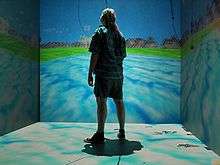
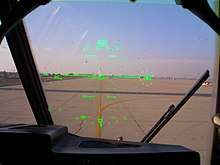
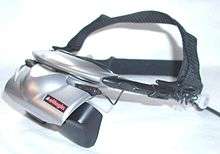
_(2006).jpg)
